"We can't turn back the clock, but we can certainly improve the chances that things can survive again."
This is how beef and sheep farmer Ben Stubbs views his family's multi-generational mission to protect native forests and water catchments on their Waitomo property.
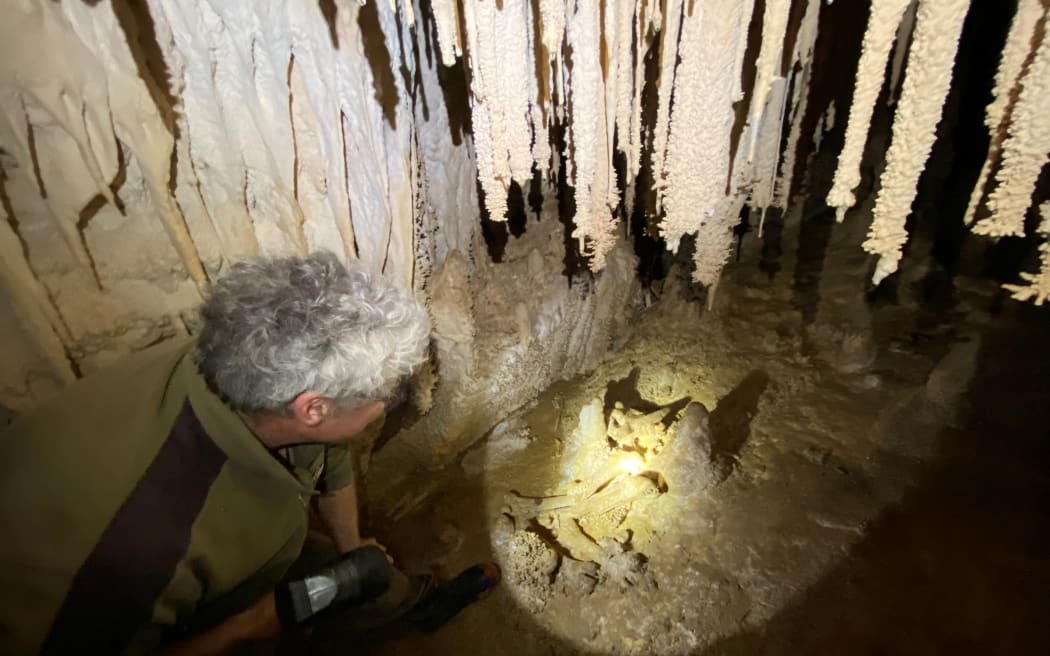
Ben Stubbs inside Ann's cavern inspecting moa bones. Photo: RNZ/Leah Tebbutt
While the native bush and four water catchments on Stubbs' farm hold many stories, it's the underground caves that make things really interesting.
After hunching down, squeezing through a tight gap and then slipping down a slosh of mud caused by recent rain, Leah Tebbutt finds herself in the heart of Ann's Cavern - an old dry cave that's home to a maze of stalactites and named after Stubbs' mother.
Slipping past the stalactites, she and Stubbs come upon a sight they cannot ignore.
"This is a big moa. This was a dinornis, which was a big moa from the North Island," Stubbs says matter-of-factly.
"That one's died in here and calcified into the formation.
"You can see the pelvis and the femur and the metatarsal. And there's a vertebra there. The rest of [the bones] sort of scatter off and the skull must be just up there somewhere.
"That's locked in time, it's absolutely incredible."
It is incredible to stand over the remains of a creature you've only ever seen in books.
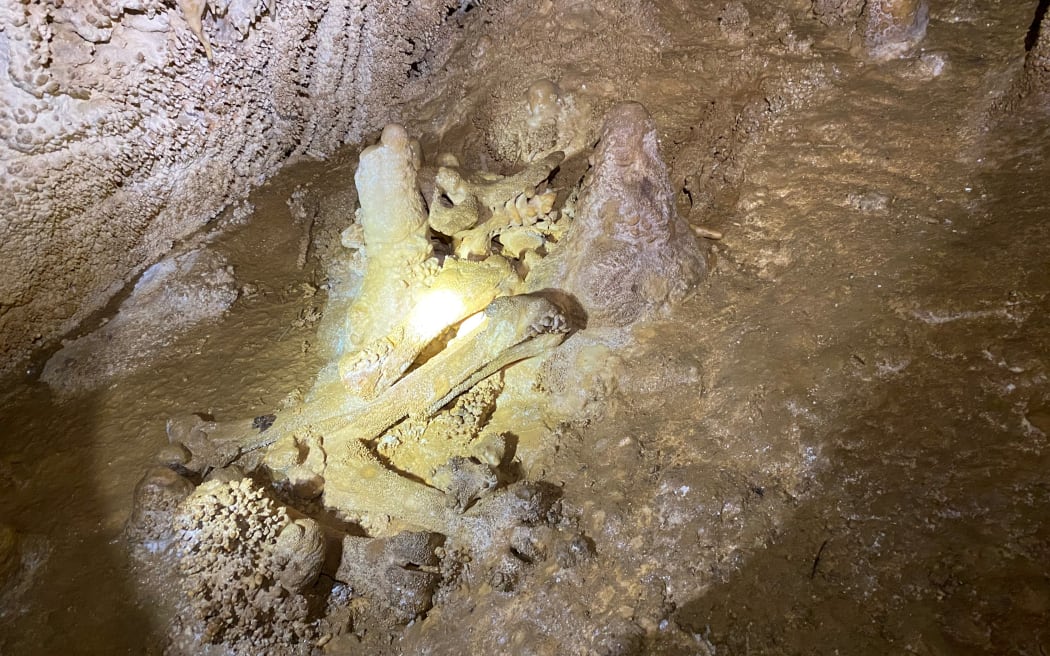
Moa bones, including the pelvis, calcified in a cave. Photo: RNZ/Leah Tebbutt
As a boy, Stubbs says his imagination was captured by this moa fossil and the many other remnants of endangered or extinct species that have been discovered in the caves.
"It made you think about what you lost and made you think about ways we could preserve what we still have.
"That I think is the key and is where we need to be heading as a society because we haven't got much time to get it right."
When Stubbs' great-grandparents and grandfather arrived in Te Kuiti back in 1914, much of the area had already been felled and burnt, he says.
In 1980, his parents became some of the first New Zealand farmers to put their land into a QEII covenant.
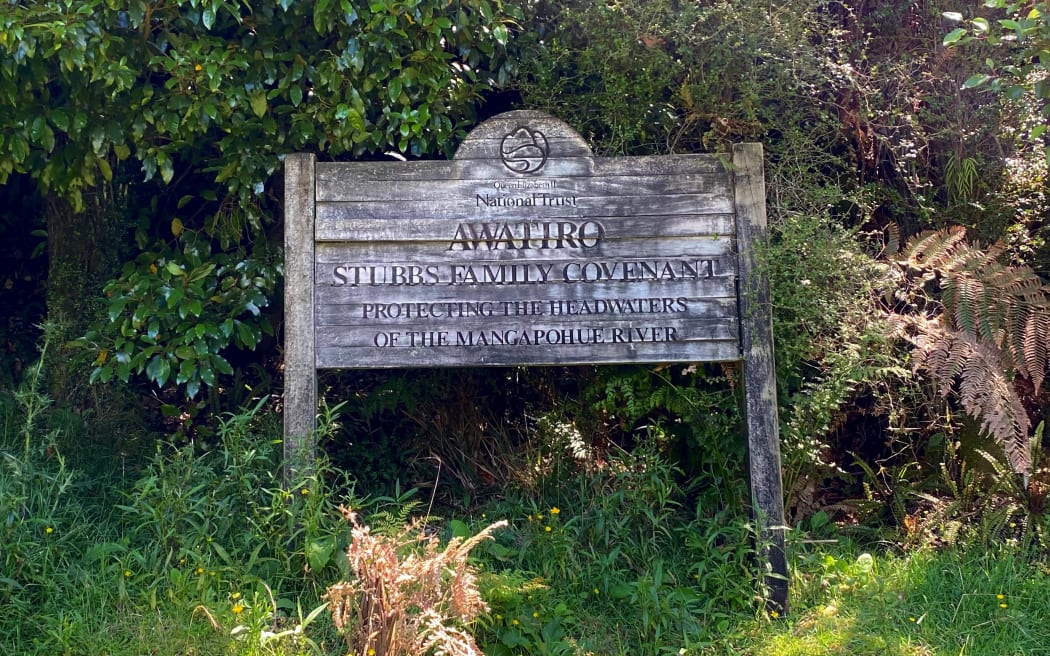
Stubbs family covenant, the 1000th QEII covenant. Photo: RNZ/Leah Tebbutt
"It means the land is protected in perpetuity so even if the farm is sold, our hopes with the reserve would have to be fulfilled," Stubbs says.
"I think [my parents] were worried. At that stage, we were facing a lot of adversities financially and they didn't want to see the forest on the farm knocked down and people try to farm it, which is clearly not going to work anyway because it's so rough in there.
"They possibly weren't regarded as clever. It wasn't good farming practice perhaps to be reserving land in perpetuity behind a fence, because that's not farming.
"But now in retrospect, I think they will be looking back and being very proud. They certainly never questioned what they did.
"They knew it was the right thing to do, but now there are a lot more people that believe the same thing and that's only going to be better for the country."
Since taking over the farm in 2003, Stubbs and his wife Bex have continued the protection work and now almost the entire 800 acres are in covenant.
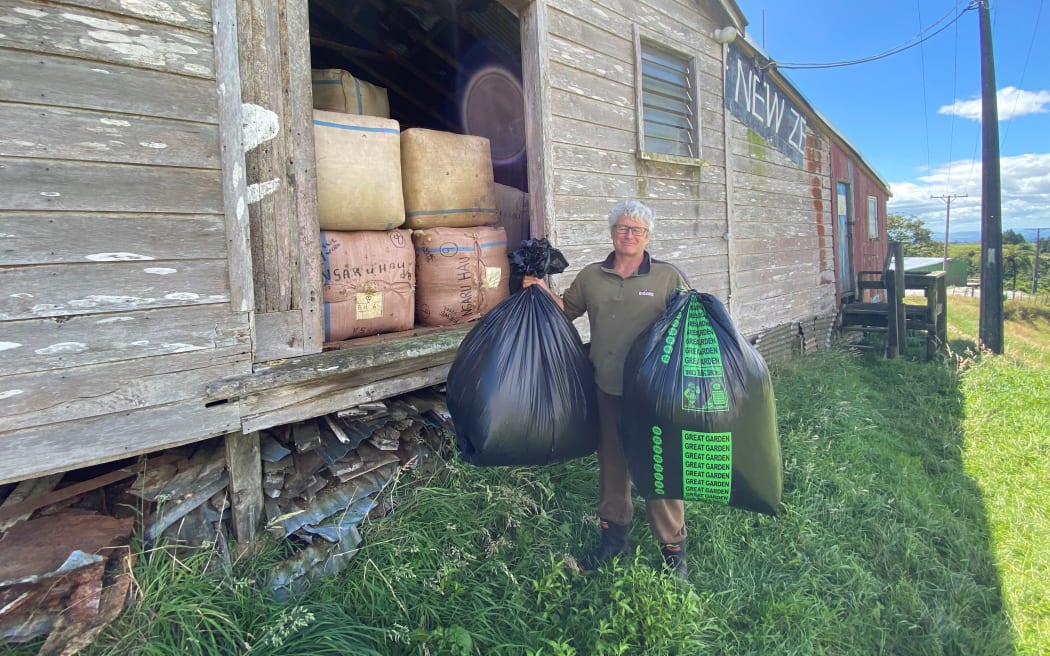
Ben Stubbs with two bags of possum fur worth more than his full wool shed. Photo: RNZ/Leah Tebbutt
Stubbs says his family face a lot of challenges with continuing to farm traditionally on the land and he would like to see farmers rewarded for their environmental conservation work.
This would also be a form of encouragement to get things right.
"We're all in it together. Our forests play a part in mitigating some of the risks to humans, there is no question about that. The wetlands on our farms slow down the water flow that comes off. It catches all the sediment and bits of tree and anything else that is wanting to go down our streams and it heals the water as it goes.
"When I look at this place, it was easy for us to do the right thing because we could see there was something to lose.
"We already had a beautiful forest on the farm a thriving ecosystem to go with it full of beautiful insects. We could see what we were going to gain and we could also see what we'd lost.
"The caves are interesting in that they are a record of the past."
As a child, Stubbs recalls discovering the bones of weka, powelliphanta (giant land snail), kōkako, takahē, and of course, moa in the caves.
"We can't turn back the clock but we can certainly improve the chances that things can survive again ... It's a possibility, eh."
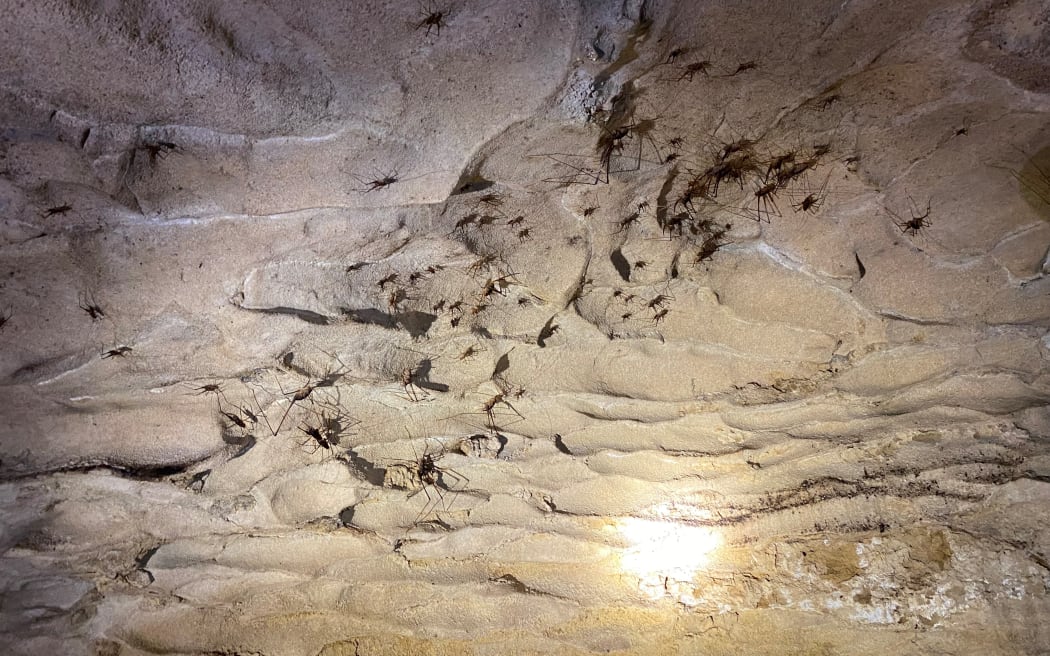
Weta's nestled at the top of the cave. Photo: RNZ/Leah Tebbutt


